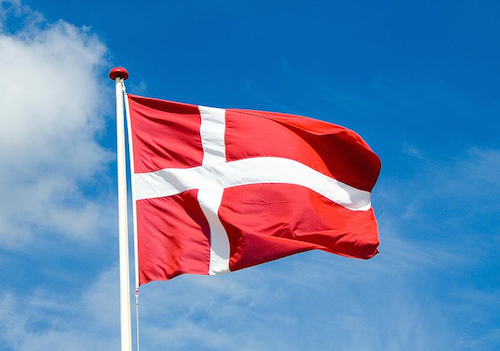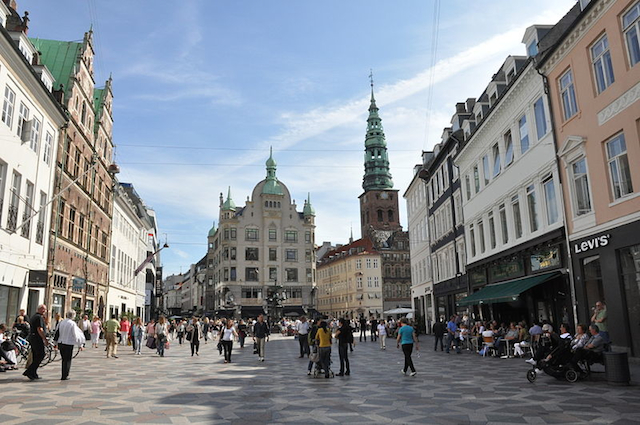9 Surprising Facts About the Danish Language
Denmark’s most internationally famous author is Hans Christian Andersen, whose fairy tales in particular are well-known and beloved across the globe. Indeed, many of his stories such as The Emperor’s New Clothes and The Ugly Duckling have been translated into over 125 languages. You’ve almost certainly read the English translations of these books, but do you know anything about their original language, Danish? For instance, did you know that the Danish alphabet acquired a new letter just 60 years ago? Or that Danish speakers can also understand Norwegian and Swedish? The official language of Denmark is peppered with interesting and unusual trivia: keep reading to learn more.
 Image via Jacob Bøtter / flickr
Image via Jacob Bøtter / flickr
1. Danish speakers can understand Norwegian and Swedish.
Danish, Norwegian, and Swedish are mutually intelligible, which means that speakers of each language can understand one another. In this way, learning Danish is almost like learning three languages in one!
2. Danish is an official language in Greenland.
Though Danish is primarily spoken in Denmark, it’s spoken as a native language by about 20% of the population of Greenland, where it holds official language status.
3. Vowels abound.
Like English, Danish uses the Roman alphabet, but it contains three extra vowels: Æ, Ø, and Å. Therefore, it has a total of nine vowels, which can be pronounced in sixteen different ways. For instance, the “a” in sal (hall), salt (salt), and saks (scissors) sounds distinct in each word.
4. There’s a polite way of speaking -- but it’s rarely used nowadays.
English speakers often struggle with languages that distinguish between informal and polite ways of saying “you”. Danish does make this distinction, as du is informal whereas De is formal. However, De is rarely used in modern speech and is found mostly in old-fashioned speech or formal letters.
How good is your Danish? Find out by taking our free online Danish level test!
5. It’s easy to create new Danish words on the fly.
Danish, like German and Dutch, makes extensive use of compounding, which is the act of adding words together to create longer words. For instance, Langtidsplanlægge is a compound word that derives from lang (long), tid (time), and planlægge (plan). Due to this compounding, there are a nearly infinite amount of potential Danish words.
6. Using a “creaky” voice can change what you’re saying.
Danish features a neat phonological feature called stød, which can sound like a small hiccup or a creak in one’s voice. This is notoriously challenging for non-native speakers to master, but it’s important: stød is the only difference between the pronunciation of the words bønner (beans) and bønder (farmer).
 Image via Furya / Wikipedia
Image via Furya / Wikipedia
7. Danish gained a new letter in 1948.
The letter å did not exist in written Danish until 1948, before which it was written as a double-a (aa). However, “å”hasn’t completely replaced “aa”. For instance, some towns such as Aalborg never adopted the new convention into their town names, and thus “aa” is still seen every now and then.
8. Danish has two genders -- but they’re not masculine and feminine.
Nouns in Danish can take either of two genders, but they are called common and neuter rather than masculine and feminine. The division between these two genders is mostly arbitrary, though all nouns must belong to one or the other.
9. Counting is based on the number 20.
Well, sometimes, at least. In Danish, the numbers 50, 60, 70, 80, and 90 use a vigesimal system, meaning that they are based on multiples of 20 instead of 10. For instance, the word for “sixty” is tres. This is a shortened form of tresindtyve (tre-sinde-tyve), which means 3 times 20.
Even if you’ve read Danish classics like The Little Mermaid countless times, we bet you didn’t know how to count in Danish!
Of course, there’s a lot more to Danish than counting. Indeed, the complexities of Danish grammar are a bit more complex than the plot of The Ugly Duckling. So if you want to learn Danish, you should think about taking courses from a qualified native Danish speaker, who will be able to answer all of your questions. Contact us for more information about how we can help you master Danish.


